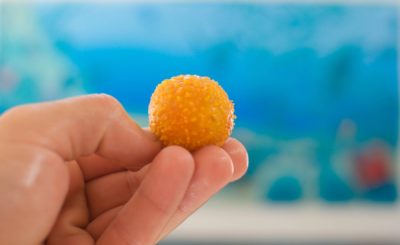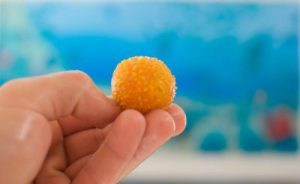
Even though sponges you may have seen while at CIMI are the simplest of the multicellular animals, unable to move (something scientists call sessile), and look nothing like your favorite Krusty Krab frycook, they are actually quite interesting and very important to our marine ecosystems.
Because these animals do not have mouths and do not move, they instead use pores along the outside of their body to filter feed. These pores, called ostia, are where water enters the animal, carrying oxygen and small food particles like algae, protozoans, detritus, and other dissolved organic material along with it. The water is able to move because of hair-like parts called flagella that whip and create a current travelling through the sponge. Once the organism has absorbed the food and oxygen needed, it then ‘exhales’ the water through a larger opening, called an oscula, on its top side. Many sponges also rely upon relationships with photosynthetic organisms to get additional nutrients!

Not only do sponges lack mouths, but they also lack any organs or tissues! Their body is only a collection of almost entirely independent cells. What is even more interesting is what happens when these cells are separated. If the sponge is damaged and these cells are broken apart, the sponge can actually reform, finding and reassembling all of the similar cells until it is whole again! They are the only animals known to be able to do so.
Beyond their unique feeding method and cell structure, sponges are also very important in Southern Californian ecosystems as a food source for many of our favorite sea creatures like sea stars, turtles, sea slugs, and even some fishes!
Written By: Alex Krowiak


